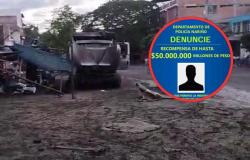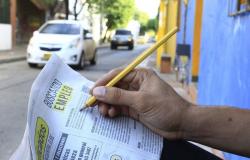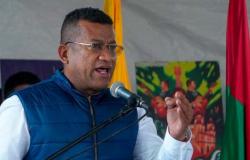The public order situation in the region is critical due to several attacks by the self-proclaimed Central General Staff of the FARC. The response of the national government has been to intensify the offensive against dissidents. What is happening in southwestern Colombia?
Oscar Sotelo Ortiz
@oscarsopos
May 20, 2024 will be remembered as one of the days in which the self-proclaimed Central General Staff of the FARC, EMC, deployed one of the most important military offensives in the southwest of the country, specifically in Morales, Suárez, Miranda and Jambaló , municipalities of Cauca, as well as in Jamundí and Dagua, in Valle del Cauca.
Faced with the onslaught, the response of the national government has been the installation of a permanent Security Council in Popayán. In this space, the authorities have announced the significant increase in security operations and the commitment to restore public order in the region.
However, throughout the month of May, the confrontation between this armed actor and the public force has revealed not only a worsening of the war, but also a humanitarian crisis, with the civilian population being the main victim in this new chapter of the conflict.
The suspension of the ceasefire
The worsening of the war in Cauca and Valle del Cauca has as its starting point March 18, the date on which the national government made the decision to suspend the ceasefire with the EMC.
At the time, the executive argued that the determination was based on the attack committed by this armed actor against an indigenous caravan in Toribio, which ended with the painful murder of the indigenous leader Carmelita Yule Paví.
After this tension, three delicate consequences were unleashed for the future of the negotiation with the EMC. The first was the escalation of the armed conflict in the departments of Cauca and Valle del Cauca, where the Dagoberto Ramos (north of Cauca), Carlos Patiño (south of Cauca), and Jaime Martínez (north of Cauca and south of Valle) fronts are present. and Rafael Aguilera (Caucano Pacific).
The second thing is that the worsening of the war in this region caused a rupture within the EMC, since in some territories the ceasefire is maintained. And, finally, this situation has led to an almost total paralysis of the peace table between the national government and these FARC dissidents.
The figures and facts
According to the monitoring carried out by the Institute of Development and Peace Studies, Indepaz, these are the high-impact events that have occurred in the territory since the breakdown of the ceasefire. From May 2 to 6, clashes occurred between the Carlos Patiño structure and the National Army in Algeria. The result was four dead uniformed officers.
For its part, on May 10 an explosive detonated in the El Porvenir neighborhood in Miranda, while on May 17 a device exploded on the road that connects Miranda with Corinto. In this terrorist action, a twelve-year-old minor died.
However, May 20 was the day with the highest violent record in the region. To the clashes between the EMC and the public force in Suárez and Miranda, is added the explosion of a motor bomb in Jamundí, Valle del Cauca, and the armed attack on the police station in Morales, Cauca, which left the balance of two uniformed officers murdered and the total destruction not only of the police post, but also of the road that connects this municipality with the Matarredonda sector.
Analysis
According to Manuel Hernández, a member of the Francisco Isaías Cifuentes Human Rights Network of Pupsoc, the only way to overcome the crisis is for the national government and the organizations taking up arms to remain in the dialogue process, to stop the armed attacks. to urban centers to guarantee the safety of the civilian population and seek alternatives to enable a multilateral ceasefire.
“We see this escalation of attacks and operations as a response to the conflict, mainly in the Micay and Plateado Canyon, as it is an area of geostrategic interest. This constant dispute between the ELN, the EMC and strongholds of the Second Marquetalia has caused confinements and displacements of the civilian population. The Army’s operations have only aggravated the situation of the communities, since they are in the middle of the conflict,” argues Hernández.
For her part, Estefanía Ciro, researcher at the Center for Thought from the Colombian Amazon, By the riverconsiders that the executive has made mistakes in understanding the conflict with the EMC in this region: “In Cauca, particularly in the Micay Canyon, the Government failed in field intelligence to recognize who the other party was with whom it was negotiating. ”.
For Ciro, in this territory there are still gaps in the understanding of the phenomenon of conflict reconfiguration. In addition to the crisis in the implementation of the Peace Agreement, and the eternal promises that do not materialize about the end of social, ethnic and political gaps, it is added that it is a particular region, which is at the same time rural, ethnic and peasant , although with high population density and powerful economic movement, both legal and illegal economies.
“Of all these contradictions I want to draw attention to one of the key elements of this new war, which is the overflowing and uncontrolled insertion of the youth of the southwest. The solution is not the call – as the political leaders of the dissidents say – for a ‘true’ structural change in the country, wanting to give political nuance to a violence that uses these youth in a negotiation without clarity. On the other hand, the solution is not militarization, which some sectors in the country call for. Neither of them resolves a central issue, which is how to give a life project to all young people, who today are finding a future in war,” concludes the researcher.






